29 Aug 2024 - {{hitsCtrl.values.hits}}
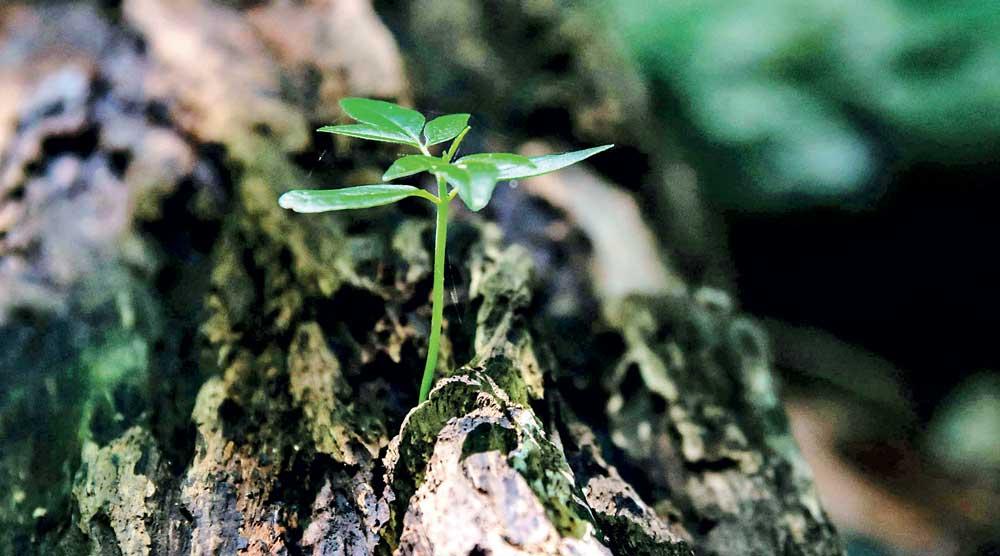
National extinction of species like sawfishes should be a warning and not a precedent. We must remember that our oceans are vast but not infinite, and neither are their wild resources.

Today IN YOUR OPINION we focus on the extremely relevant topic of ‘ WHITHER THE ENVIRONMENT ’, where a diverse range of Experts and Professionals in this field are interviewed by Anusha David . The philosophy of Trusteeship of Land by the rulers goes back to 3 BC. The ancient chronicles record that King Devanampiya tissa was told by Arahat Mahinda in his first sermon – “O’ great King, ….the land belongs to the people and all living beings; thou art only the guardian of it”.
Sri Lanka is an island which has been identified as one of the top biodiversity areas in the Asian region. Sri Lanka’s natural forest resources are amongst the most floristically prosperous in Asia and it has the highest density of species diversity. However, recently anthropogenic threats to its forest and other natural resources (e.g., coastal, rivers, soil, fauna, flora, etc) have increased exponentially.
Limited commitment and dedication from both public and state, the lack of effective environmental laws and weak policies, together have compounded the situation and created serious environmental threats in recent years resulting in challenges for environmental conservation, such as deforestation, freshwater pollution, air pollution, noise pollution, soil erosion, wildlife poaching, coastal degradation, and mangrove reduction in Sri Lanka, amongst others.
Today, globally a large number of international institutions are working to conserve the environment, more than ever due to the threats which humans have created. We need to take urgent action to protect the nation’s environmental resources for the sake of current and future generations. “We can now destroy or we can cherish. The choice is our”. Sir David Attenborough.
 Q:As the Founder and Coordinator of Sri Lanka’s largest environmental youth organization, what would you say is the greatest threat to the seas surrounding Sri Lanka and how best can they be mitigated ?
Q:As the Founder and Coordinator of Sri Lanka’s largest environmental youth organization, what would you say is the greatest threat to the seas surrounding Sri Lanka and how best can they be mitigated ?
Muditha Katuwawala - Coordinator, Pearl Protectors
A:Sri Lanka’s seas, see many anthropogenic impacts harming its marine ecosystem. Top of the list is climate change. Due to the ever increasing temperature, the first in line of its impact are the tropical seas which absorb most of the atmospheric temperatures resulting in coral bleaching, ocean acidification, sea level rise and loss of habitat.
Over - fishing and the use of illegal fishing practices is also on top of the list, that challenges our marine environment. According to NARA, 50% of Sri Lanka’s shallow water marine life has now disappeared. While illegal bottom trawling is taking place in the North West of Sri Lanka, dynamite fishing is rampant in the Eastern Province. Spear fishing and the illegal use of fishing nets have decimated underwater marine life.
Various types of pollution such and plastic and chemicals have affected the ocean life significantly. Agricultural runoffs have led to a significant increase in harmful chemicals flowing out into the ocean. The waters around Sri Lanka also face Maritime accidents, coastal construction, coastal erosion, loss of mangrove habitat, unethical marine tourism practices, oil spills, increase in ornamental fishing and sea turtle nest poaching.
Although we are an island nation, the extent to which most citizens interact with the ocean is limited to the beach. It’s important they learn the vast biodiversity and become passionate towards protecting our marine resources. Eco conscious practices, limiting the use of single use plastic, volunteering, being a citizen scientist, swimming and diving are simple tasks any Sri Lankan can engage in.
“We can protect our ocean only if we become one with the ocean.”
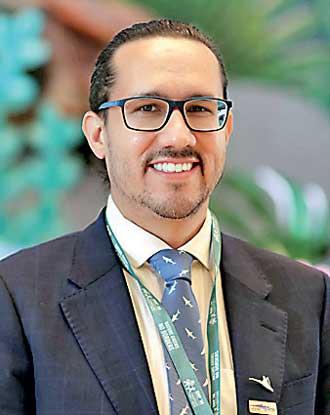 Q:As Co-Founder and Director of Blue Resources Trust, how successful have you been in implementing policy regarding sustainable fishing and what steps does the government need to take to protect and conserve our oceans and marine life such as sharks and rays?
Q:As Co-Founder and Director of Blue Resources Trust, how successful have you been in implementing policy regarding sustainable fishing and what steps does the government need to take to protect and conserve our oceans and marine life such as sharks and rays?
Daniel Fernando is the co-founder of Blue Resources Trust and director of their Fisheries and Policy programme. His focus is primarily on sharks and rays and bridging the gap between science and policy.
A: Progress has been made but a drop in the ocean, and much more must be done. To provide perspective, Sri Lanka operates nearly 50,000 vessels in the Indian Ocean with most classified as “artisanal.” However, the scale of this fishery rivals industrial fleets, causing significant environmental impacts. Sri Lanka has long ranked among the top shark-fishing nations and remains a leader in manta and mobula ray fishing. Unlike tuna, sharks and rays have life cycles more akin to elephants and leopards, yet they lack adequate management.
Sustainable fisheries management is essential and multifaceted. It demands strict protection of vulnerable species and habitats, regulation of fishing practices, and restoration of depleted populations. Despite Sri Lanka’s leadership in international forums, national action for species management lags. Sustainable fisheries are key to food security and economic stability, while overexploitation, often marketed as development of our “blue economy”, is NOT. Tough decisions are essential to maintain our biodiversity for long term fisher livelihoods. National extinction of species like sawfishes should be a warning and not a precedent. We must remember that our oceans are vast but not infinite, and neither are their wild resources.
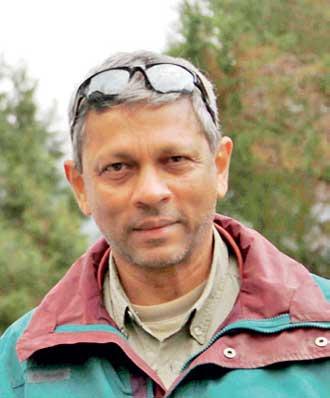
Q:Why is environmental conservation so important for Sri Lanka? How can we benefit from it?
DR ERIC WIKRAMANAYAKE – DIRECTOR, ENVIRONMENTAL FOUNDATION
A:From an ethical standpoint, especially in a country that champions Buddhism, we have a stewardship obligation to protect living, sentient organisms and their habitats. Sri Lanka has a rich endemic flora and fauna; species found only in Sri Lanka and nowhere else on Earth. These species have evolved here for millennia…far longer than the man-made structures to which we pay greater attention and homage. Instead, we should have more pride, and place greater value on our Natural Heritage.
But there are other compelling reasons that have implications for our own well-being, survival, and economic progress and stability.
Our biodiversity and nature make significant economic contributions. For instance, as a world-renowned nature-based tourism destination, Sri Lanka benefits economically from its wildlife.
But importantly, Sri Lanka now faces the vagaries of climate change, and ranks among the top countries for climate risk. The predictable monsoons have given way to extreme weather events which cause floods and droughts, with consequent landslides, fires, property and agricultural damage, loss of livelihoods and lives. They disrupt and destabilize socio-economic systems, causing economic regression. They place people, our economies, and governance at risk. But natural ecosystems build climate resilience and reduce vulnerabilities. Healthy and intact forests, mangroves, reefs, for example, buffer the impacts of these extreme events and mitigate climate change.
So, environmental conservation is not just an ethical obligation or an option; it’s now an imperative for our own survival and existence to survive climate change.
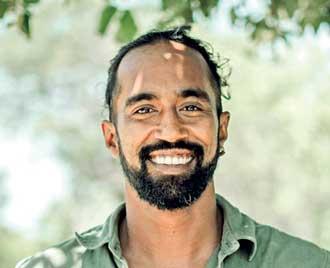 Q:Working collaboratively with the Mangrove Conservation and Sustainable Livelihoods (MCSL) Forum, how would you address the issue of mangrove forests being destroyed to make way for aquaculture, tourism development or other forms of agriculture?
Q:Working collaboratively with the Mangrove Conservation and Sustainable Livelihoods (MCSL) Forum, how would you address the issue of mangrove forests being destroyed to make way for aquaculture, tourism development or other forms of agriculture?
Vinod Malwatte is the Executive Director of the Lanka Environment Fund (LEF) and Co-Founder of the Parrotfish Collective
A:Through the implementation of systematic land use planning and management, much of the haphazard, short-term developmental pitfalls we face could be avoided. Sadly, with little to no land use planning in effect, many of the government departments have competing mandates, many of which put our ecosystems at threat. As a nation, we are yet to conduct a comprehensive mangrove assessment. Through conducting an assessment, we would be better able to understand how we could utilise our mangrove ecosystems for the betterment of our country. With plenty of ecosystem services to offer, mangroves cannot only support artisanal coastal fishing communities but also be utilised for eco tourism opportunities and the establishment of blue carbon projects. Progressive conservation interventions such as blue carbon projects provide Sri Lanka with an opportunity to conserve our mangrove ecosystems but also derive financial benefits to local communities; a critical step in rebuilding Sri Lanka’s economy.
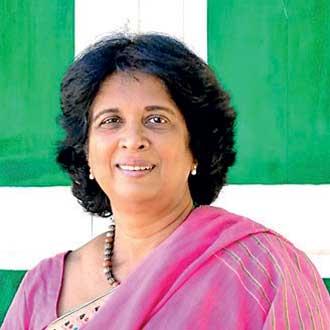 Q:Sri Lanka increasingly contends with the grim reality of climate induced disasters. Can you comment on building community resilience in the face of extreme climate events and related environmental disasters?
Q:Sri Lanka increasingly contends with the grim reality of climate induced disasters. Can you comment on building community resilience in the face of extreme climate events and related environmental disasters?
Kusum Athukorala -Snr Advisor, Sri Lanka Water Partnership
A:Sri Lanka is facing the entire gamut of climate fuelled disasters- droughts,floods, forest fires and landslides. Catastrophes pile multiple andincreasing burdens on communities already battered by COVID and thefinancial crisis which has dented existing resilience. In the aftermath of a fresh disaster, a cash strapped state may not be able to support communityrehabilitation to the same extent as in earlier instances. Though the armed forces and the Police are seen as first responders, it is the members of the community, closest to the site of the disaster, who are usually the first on the scene to dig out the victims of a landslide or evacuate a flood stricken family. Therefore it is imperative that disaster preparedness and related response mechanisms need to be enhanced through targetted capacity building programmes, covering schools, CSO and local government authorities ; mainstream as well as social media are useful tools.
 Q:PLANT is a groundbreaking new conservation initiative. What is PLANT’s mission, how do you operate, and how successful have you been thus far?
Q:PLANT is a groundbreaking new conservation initiative. What is PLANT’s mission, how do you operate, and how successful have you been thus far?
Sriyan de Silva Wijeyeratne - Chairman PLANT and former President-
Wildlife and Nature Protection Society
A:Preserving Land and Nature (Guarantee) Ltd, was set up in 2020 by the WNPS with a Mission to Create reasonably connected corridors of protected natural spaces and forest ecosystems, that safeguard Sri Lanka’s unique biodiversity. This is the first initiative creating Private Conservation spaces at scale in Sri Lanka. PLANT raises funds to acquire lands directly or engages with landowners and companies to help set aside privately owned lands, for the purpose of conservation on behalf of future generations. A range of figures between 29% from government based on an old survey, to 18-20% from conservationists of today, are being used to denote Sri Lanka’s current forest cover. But one thing everyone agrees upon is that massive forest loss is taking place in
Sri Lanka.
We protect lands in their existing natural states, convert private lands to conservation areas, and focus on scientific rehabilitation efforts on degraded lands. Our Emerald Trails initiative hopes to create corridors within the southwestern quarter of the island, which is home to the vast majority of our endemic species.
We are excited about our progress. PLANT, along with over 25 partners, already protects over 20 extremely sensitive land blocks which are home to over 900 species. Our footprint is over 2500 acres, we have begun creating 140 acres of new forest, over 18,000 seedlings are on the ground, and we are working on over 15 kilometers of forest corridors. PLANT is hopeful of driving a Conservation Social Revolution (www.plantsl.org ).
 Q:Are Sri Lanka’s Corporates doing enogh vis a vis mitigating the environmental hazards resulting from increased industrialization, population growth, and insufficent general awareness , through a changed business model ?
Q:Are Sri Lanka’s Corporates doing enogh vis a vis mitigating the environmental hazards resulting from increased industrialization, population growth, and insufficent general awareness , through a changed business model ?
Shiranee Yasaratne, Senior Advisor Biodiversity Sri Lanka and President of the Institute of Environmental Professionals Sri Lanka
A: At a time when environmental issues are a major topic of worldwide discussion, the role of businesses in leading positive change is crucial. Increasing emphasis on sustainability and environmental stewardship , presents both a challenge and an opportunity for our companies across various sectors. Sri Lankan companies are grappling with adapting to stricter regulations, responding to growing consumer demand for green products and mitigating risks associated with environmental degradation. Navigating these challenges requires more than good intentions. It demands strategic planning and the adoption of effective practices that reduce environmental impacts whilst offering economic benefits.
Parts of the Sri Lankan corporate sector are transforming to become inclusive and sustainable businesses that go beyond the usual “profit-first” market approach to providing affordable goods, services and livelihoods to low-income people and to support environmental sustainability. This minority are inclusive and sustainable businesses that are purpose-driven enterprises that deliberately seek positive change in communities and the environment. Ambitious reforms are taking centre-stage towards rebuilding Sri Lanka into a resilient and sustainable economy. Businesses must play a crucial role in achieving social and environmental sustainability goals, in a changed business model that use market-based approaches, to achieve positive impacts, whilst ensuring their own commercial sustainability.
 Q:As one of Sri Lanka’s pioneers and most passionate conservationists, what is your opinion of the status of our environment and what would be your advice as to what we should do in order to mitigate the rapidly accelerating pace of climate change ?
Q:As one of Sri Lanka’s pioneers and most passionate conservationists, what is your opinion of the status of our environment and what would be your advice as to what we should do in order to mitigate the rapidly accelerating pace of climate change ?
Iranganie Serasinghe - Co Founder Ruk Rakaganno
A:Ruk Rakaganno came into being in 1975 as a result of like-minded, conservation minded people, who strongly felt that they needed to be vocal and take a stand against some of the potentially disastrous projects vis- a- vis the environment that were being initiated. Sadly instead of things improving , in the name of ‘Development’ the world and our environment are in crisis !! What’s more the majority of the global population are still in denial of the havoc and wreckage that they are willfully causing and enabling. If our beautiful planet is to continue its existence, its human population needs to accept the fact that Man and Nature must and indeed needs to co exist if we are to continue our existence. The environment and its conservation is intrinsic to our very existence. We have to act Now !
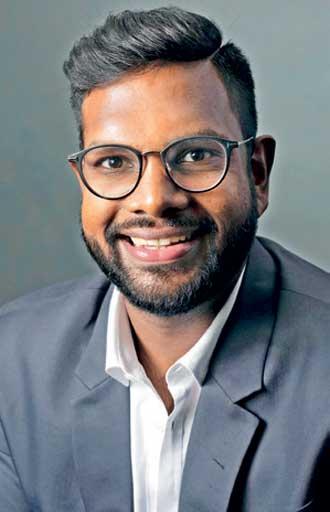 Q:Why is it important to put the environment at the centre of Sri Lanka’s economic recovery ?
Q:Why is it important to put the environment at the centre of Sri Lanka’s economic recovery ?
Anushka Wijesinha is an economist, and Co-founder/Director of Centre for a Smart Future, an interdisciplinary public policy think tank. He is an Appointed Member of the Governing Board of the Central Bank of Sri Lanka, and formerly on the Boards of Seylan Bank PLC and HNB Finance PLC.
A:We have to recognize that achieving environmental outcomes and achieving economic recovery need not be mutually-exclusive goals. Putting nature at the heart of our post-crisis growth model can actually ensure that we have a better quality of growth - sustainable growth and human wellbeing. Key economic sectors like tourism, and Agro exports are deeply connected to nature - something we easily forget. Biodiversity loss and impacts of global climate change will have material impacts on those sectors and affect their competitiveness. It’s not just about resilience to the impacts (protecting against the downside), but developing nature-positive growth models (actively shaping the upside). Alongside this, we need to change how we measure growth and assess value in our economy. GDP is an old and outdated metric - it doesn’t account for natural capital, only produced capital. We have to go beyond GDP. Some work has begun in Sri Lanka on natural capital accounting and ecosystem valuation, but progress has been slow. We can’t truly say we are pursuing green growth, if we are using outdated ‘brown’ approaches to measure growth and progress.
 Q:What do you believe are the most pressing challenges for the fashion industry in achieving true sustainability, and how do you see your work contributing to overcoming these obstacles?
Q:What do you believe are the most pressing challenges for the fashion industry in achieving true sustainability, and how do you see your work contributing to overcoming these obstacles?
RUWANTHI GAJADEERA - Sri Lankan sustainable fashion and textile designer and the first South Asian fashion designer to win the Taiwan Fashion Design Awards in 2021
A:One of the most pressing challenges the fashion industry faces in achieving “true sustainability” is the disconnection between the production processes and the natural ecosystems that support them. Regenerative agriculture, which I am currently exploring in my research at the Royal College of Art, offers a promising pathway to address this issue. This approach goes beyond sustainable practices by actively restoring and enhancing the soil, water systems, and biodiversity. However, the industry often overlooks the potential of regenerative methods, especially in regions like Sri Lanka, where traditional agricultural practices have long harmonized with nature, offering a vital counterpoint to modern agriculture embedded with colonial legacy. Decolonization of these practices by embracing indigenous knowledge systems could be a start that leads to “true sustainability”.
My work bridges this gap by integrating regenerative agriculture into fashion and sourcing natural fibres and dyes that enrich the environment. Collaborating with Sri Lankan farmers and artisans, I aim to create commercially viable textile solutions that support local resilience and promote carbon-positive industrialization. This approach redefines sustainability, turning fashion into an active force for environmental, cultural and economic renewal.
 Q:You are regularly involved in environmental litigation and of recent times have filed a number of public interest litigations on environmental and wildlife conservation against public authorities, including cabinets of ministers under different governments to compel compliance with the environmental laws of the country. Why has it become necessary to seek the intervention of the courts to protect the environment, when it ought to be a primary duty of the Government?
Q:You are regularly involved in environmental litigation and of recent times have filed a number of public interest litigations on environmental and wildlife conservation against public authorities, including cabinets of ministers under different governments to compel compliance with the environmental laws of the country. Why has it become necessary to seek the intervention of the courts to protect the environment, when it ought to be a primary duty of the Government?
PRASHANTHI MAHINDARATNE - SENIOR COUNSEL
Thus, our law requires environmental impact assessments (EIAs) to be carried out prior to the implementation of a project. EIAs should be genuine and credible assessments of the potential ecological damage from a development project.
A:The environment is a generational heritage, which the State is constitutionally bound to protect for the people. Yet we regularly witness illegal destruction, purportedly in the name of development, including deforestation, sand mining, destruction of the fauna and flora et al. The number of public interest litigations pending before the courts reflects the problem.
You may recall the ‘Wilpattu reforestation Judgement’, where the Court ordered a former minister to reforest illegally cleared forest lands. Then consider the recent attempt by the Minister of Wildlife and Forest Conservation to degazette the highly biodiversity significant Wedithalathive Nature Reserve. That attempt was stayed by an interim order of the Supreme Court. This is why the citizens are compelled to seek the intervention of the courts – their last port of call – to stop the devastation.
We have filed a public interest litigation challenging the proposed windfarm to be established by the Adani group in Mannar on the grounds that if the project is implemented it would cause irreparable and irreversible ecological damage. In our Petition filed before the Supreme Court, we have submitted that it is a key migratory bird passage, namely ‘the Central Asian Flyway’, through which over 15 million birds of 250 species including globally threatened species fly each year. We have further pleaded, inter alia, that the proposed project site is a world renowned hot-spot for biodiversity and avian life, including three world famous nature reserves namely the Vankalai Sanctuary, Wedithalativu Nature Reserve and Adam’s Bridge Marine National Park, and hence the Mannar Island was not suitable for the Project. We have also challenged the credibility of the environmental impact assessment submitted in support of the Project. I cannot discuss the details of the case beyond this since the matter is before Court and is sub-judice.
Development must be sustainable, balancing the competing demands of development vis-à-vis environmental protection. Thus, our law requires environmental impact assessments (EIAs) to be carried out prior to the implementation of a project. EIAs should be genuine and credible assessments of the potential ecological damage from a development project. If authorities abuse this process as a mere seal of approval in order to proceed with a project at whatever cost to the environment, the consequent ecological devastation could impact generations to come. The authorities must understand that they hold the land and its’ resources in trust for the people and the future generations, and are duty bound to conserve not squander. The philosophy of Trusteeship of Land by the rulers goes back to 3 BC. King Devanampiyatissa was told by Arahat Mahinda in his first sermon – “O’ great King, ….the land belongs to the people and all living beings; thou art only the guardian of it”.
25 Dec 2024 4 hours ago
25 Dec 2024 5 hours ago
25 Dec 2024 5 hours ago